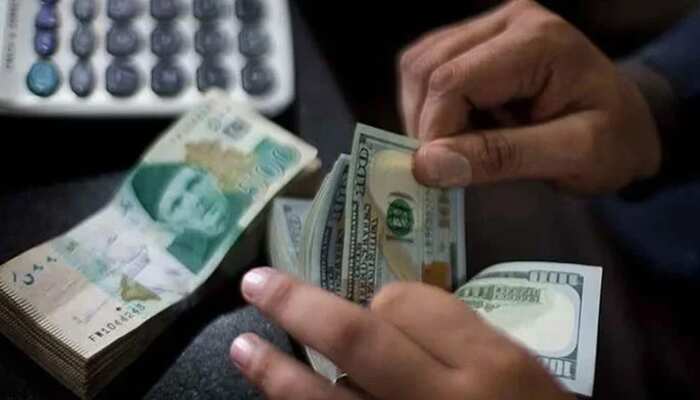The Pakistani Rupee (PKR) has reached its strongest level in three months, creating fresh optimism in the financial markets. This recovery of the rupee comes after a government crackdown on the dollar black market, which has helped stabilize exchange rates. The keyword here is Pakistani Rupee stability, a trend closely watched by traders, businesses, and policymakers alike.
Rupee Appreciation in Interbank Market
On Tuesday, the rupee gained 05 paisa against the US dollar in interbank trading. It closed at Rs. 281.96 compared to the previous day’s rate of Rs. 282.01. Although the rise appears marginal, analysts highlight its symbolic importance. It reflects improved confidence in the local currency and stronger regulatory control over speculative trading.
This marks the rupee’s firmest position against the dollar since mid-May. Currency dealers note that the government’s decisive actions against illegal dollar hoarding and unregulated transactions have curtailed pressure on the exchange rate.
Crackdown on Black Market Boosts Confidence
One of the biggest factors behind the rupee’s recent climb has been the crackdown on the dollar black market. Authorities intensified monitoring of money exchanges, curbed illegal cross-border transactions, and penalized unauthorized dealers. These steps have reduced speculative buying and improved the supply of foreign currency in official channels.
Market insiders believe the crackdown has restored investor confidence. Importers and businesses are now able to access dollars through legal channels at more stable rates. This shift has eased panic buying and helped the rupee regain ground.
Euro, Pound, and Yen See Declines
Alongside the US dollar, the rupee also recorded improvements against other major currencies. The euro fell by 04 paisa, closing at Rs. 329.24 compared to Rs. 329.28 the previous day. Similarly, the British pound witnessed a sharper drop of 82 paisa, settling at Rs. 381.01 from Rs. 381.83.
Read: Gold Prices Dip in Pakistan as International Rates Slide
The Japanese yen also slid by 01 paisa, closing at Rs. 190. Currency experts point out that these small but consistent adjustments reflect better market discipline. They suggest the rupee’s gradual strengthening is tied to an improved balance between supply and demand.
Gulf Currencies Show Marginal Changes
The rupee also gained slightly against Gulf currencies. The exchange rate of the Emirates dirham dropped by 02 paisa, closing at Rs. 76.76, while the Saudi riyal declined by 03 paisa, ending at Rs. 75.13.
These adjustments matter because thousands of Pakistani workers send remittances from Gulf countries. Even minor shifts in exchange rates can impact families relying on remittance inflows. For now, the small decline in these currencies favors rupee stability and helps reduce import costs.
Broader Impact on Trade and Economy
The strengthening of the rupee carries broader economic implications. A stable local currency reduces the cost of imports, including fuel, raw materials, and essential goods. This helps ease inflationary pressures, which have burdened households for months.
On the export side, however, a stronger rupee can make Pakistani goods slightly more expensive in international markets. Exporters often prefer a weaker rupee because it boosts their competitiveness abroad. Policymakers must therefore strike a careful balance between keeping the rupee stable and supporting export growth.
State Bank’s Role in Market Stability
The State Bank of Pakistan (SBP) continues to play a crucial role in ensuring currency stability. By monitoring interbank trading and enforcing tighter regulations on exchange companies, the SBP has limited volatility. Its official data confirmed Tuesday’s appreciation, reinforcing confidence among investors.
Financial experts suggest that if the crackdown on illegal dollar activity continues, the rupee could sustain its upward momentum. However, they also warn that external factors such as global oil prices, geopolitical tensions, and debt repayments could influence the rupee’s trajectory in the coming months.
Public Reaction and Market Sentiment
The general public has welcomed the rupee’s recovery, seeing it as a relief against rising inflation. For months, many Pakistanis have faced high living costs as the dollar’s surge drove up prices of essential commodities. The latest appreciation has raised hopes for gradual price stability.
Traders and businesses have also expressed cautious optimism. While they acknowledge that one-day improvements cannot guarantee long-term stability, the current trend indicates that government measures are working.
Looking Ahead
The rupee’s climb to a three-month high reflects the success of regulatory measures and stronger oversight of currency trading. For now, Pakistani Rupee stability appears achievable, provided the crackdown continues and fiscal policies remain disciplined.
As global markets evolve, the rupee’s performance will remain a key indicator of Pakistan’s economic health. Policymakers, traders, and citizens alike will be watching closely to see whether this momentum can turn into a sustained trend.
Follow us on Instagram, YouTube, Facebook,, X and TikTok for latest updates
